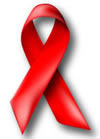
|
MEDIA AVAILABILITY
Model by NIH Grantees Explains Why HIV Prevention Dosing Differs by Sex
Approach could potentially be part of future HIV cure strategy
Oct. 30, 2014
WHAT:
A mathematical model developed by NIH grantees predicts that women must take the antiretroviral medication Truvada daily to prevent
HIV infection via vaginal sex, whereas just two doses per week can protect men from HIV infection via anal sex. This finding
helps explain why two large clinical trials testing HIV pre-exposure prophylaxis, or PrEP, in women failed to show
efficacy. Participants in the VOICE and
FEM-PrEP trials
of Truvada and tenofovir (another antiretroviral) for HIV prevention were counseled to take one of the medications daily. However, because
they actually took the antiretroviral only about 29 percent of the time in VOICE and about 36 percent of the time in FEM-PrEP, the PrEP
strategy did not work.
Angela D. M. Kashuba, Pharm.D., of the University of North Carolina, and colleagues determined what intracellular ratios of active tenofovir
and emtricitabine, the drugs that compose Truvada, to the DNA molecules with which they compete are necessary to prevent HIV replication.
Next, using data from an early clinical trial in women,
the researchers created a mathematical model that predicts these ratios in vaginal, cervical and rectal tissues given standard doses of
medication taken 2 to 7 days per week. Then, the scientists calculated the percentage of a study population that would achieve the
effective drug-to-DNA-molecule ratio by taking tenofovir or Truvada at each dosing frequency.
The immunotoxin, known as 3B3-PE38, was created in 1998 in the laboratories of Edward A. Berger, Ph.D., of the National Institute of
Allergy and Infectious Diseases, and Ira Pastan, Ph.D., of the National Cancer Institute, both part of NIH. This genetically modified
bacterial toxin targets HIV-infected cells and becomes internalized by them, shutting down protein synthesis and triggering cell
death. The study was designed by Drs. Berger and Pastan in collaboration with J. Victor Garcia, Ph.D., and colleagues at the
University of North Carolina School of Medicine, where the experiments were performed.
The model forecasts that two standard doses per week of Truvada or a daily standard dose of tenofovir would achieve the target ratio in
rectal tissue across a study population. A daily standard dose of Truvada would achieve the target ratio in vaginal tissue in more
than 75 percent of a study population, according to the model, and in cervical tissue in half of the population. A daily standard
dose of tenofovir would achieve the target ratio in cervical and vaginal tissues in less than half of a study population, the
model predicts.
It is easier to achieve the target ratio in rectal tissue than in cervical and vaginal tissues, according to the scientists, because the
concentration of DNA molecules is lower and of tenofovir is higher in rectal tissue than in the female genital tract.
ORAL ABSTRACT:
ML Cottrell et al. Predicting effective TruvadaŽ PrEP dosing strategies with a novel PK-PD model incorporating tissue active metabolites and
endogenous nucleotides (EN). HIV Research for Prevention 2014. Cape Town, South Africa.
WHO:
Carl W. Dieffenbach, Ph.D., director of the Division of AIDS at the National Institute of Allergy and Infectious Diseases,
is available for comment.
CONTACT:
To schedule interviews, please contact Laura S. Leifman, (301) 402-1663, niaidnews@niaid.nih.gov.
###
NIAID conducts and supports research-at NIH, throughout the United States, and worldwide-to study the causes of infectious and immune-mediated diseases, and to develop better means of preventing, diagnosing and treating these illnesses. News releases, fact sheets and other NIAID-related materials are available on the NIAID Web site at www.niaid.nih.gov.
About the National Institutes of Health (NIH) : NIH, the nation's medical research agency, includes 27 Institutes and Centers and is a component of the U.S. Department of Health and Human Services. NIH is the primary federal agency conducting and supporting basic, clinical, and translational medical research, and is investigating the causes, treatments, and cures for both common and rare diseases. For more information about NIH and its programs, visit www.nih.gov.
Source: http://www.niaid.nih.gov/news/newsreleases/2014/Pages/PrEPdosing.aspx
For more HIV and AIDS News visit...
Positively Positive - Living with HIV/AIDS:
HIV/AIDS News
|